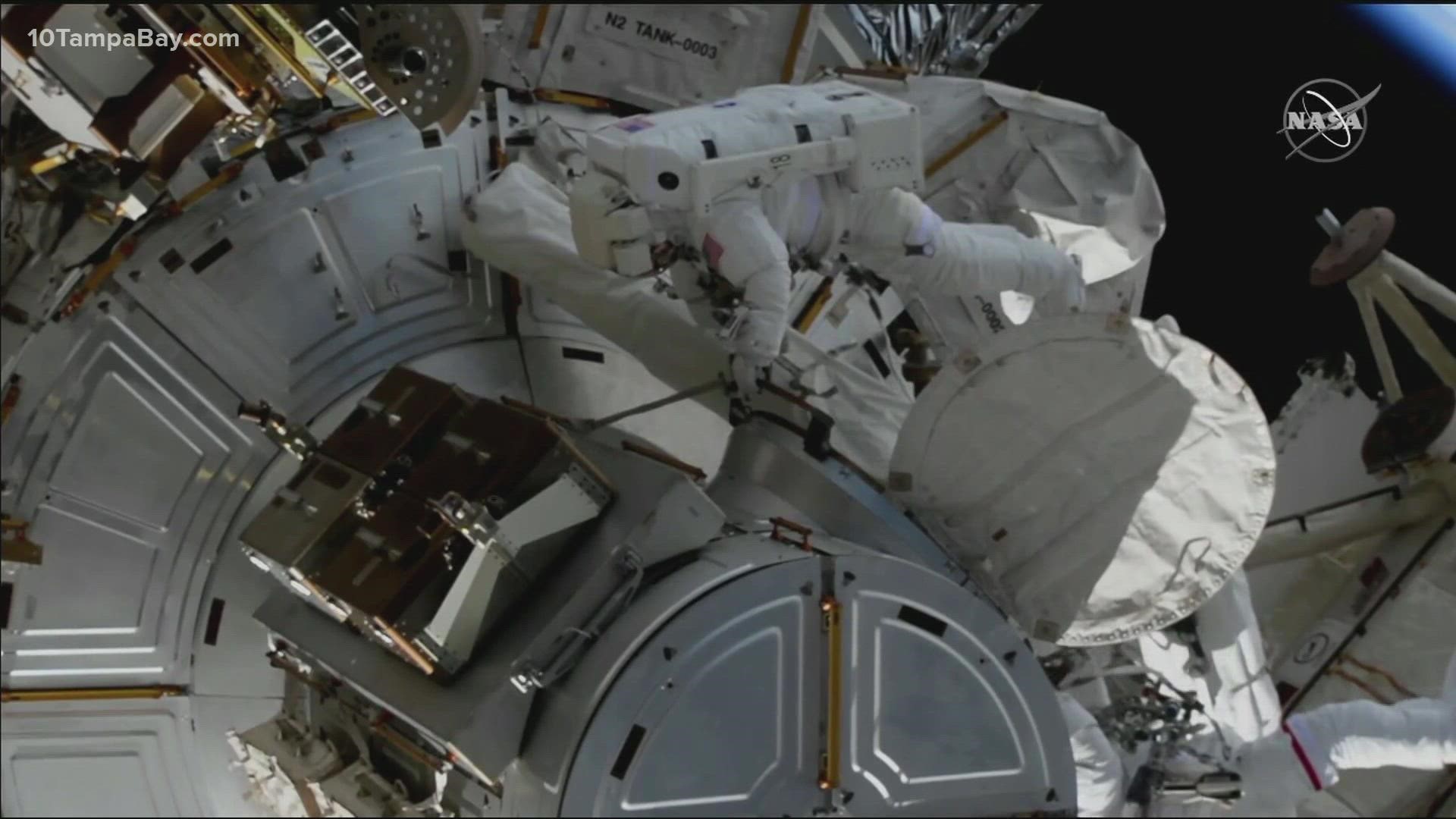WASHINGTON, D.C., USA — After decades of service, NASA says the International Space Station will meet its demise in January 2031 by intentionally being crashed into a remote part of the Pacific Ocean.
Yes, you read that right. And while that may sound intense — it's not.
According to NASA's recently released ISS Transition Report, the space station's mission control will schedule "retrograde ISS maneuvers" that will lower its operational altitude leading up to deorbit.
From there, the orbiting laboratory will be maneuvered to line up with its final target track over the South Pacific Ocean Uninhabited Area, aka, the area near "Point Nemo."
If you're wondering where that is, it's a remote ocean location noted to be the farthest from land. The National Oceanic and Atmospheric Administration reports the zone is about 1,670 miles from land.
"ISS operators will perform the ISS re-entry burn, providing the final push to lower ISS as much as possible and ensure safe atmospheric entry," the report reads.
Along the way, NASA says visiting vehicles will need to be used to assist in the space station's de-orbit before splashing into the Pacific Ocean.
RELATED: It looks like Russia won't make an early exit from the International Space Station after all
The International Space Station was originally approved to operate through at least 2024 but got a new lease on life when NASA says the Biden-Harris administration extended its operations until 2030.
"Based on the ISS structural health analysis performed to date, there is high confidence that ISS life can be further extended through 2030," the agency wrote.
NASA says the lifetime of the football field-sized orbiting laboratory's primary structure is being impacted by things like dynamic loading and orbital thermal cycling.
Since 2000, the ISS has seen more than 251 residents and visitors from around the world and has been the home to scientific breakthroughs and research.
It took the work of 15 nations, 42 assembly flights and 11 years to construct the space station, which has grown and changed over the years.
When the orbiting laboratory first began operating, it was just a small complex of three modules, as opposed to the research giant we see today.
RELATED: The new space race: Several companies pushing to replace aging space station with modern designs
NASA says it will take the next decade to continue to advance the groundbreaking work astronauts are completing daily, while also preparing for a transition of capabilities to commercially owned and operated space stations.
"It is NASA’s goal to be one of many customers of these commercial destination providers, purchasing only the goods and services the agency needs," NASA wrote. "Commercial destinations, along with commercial crew and cargo transportation, will provide the backbone of the low-Earth orbit economy after the International Space Station retires."
There are currently three companies pushing to replace the aging space station with modern designs. Blue Origin, Axiom Space, Nanoracks and Lockheed Martin have all released plans for commercial destinations — all of which are slated to be completed by the time the ISS meets its demise.
You can learn more about each company's concept here.

